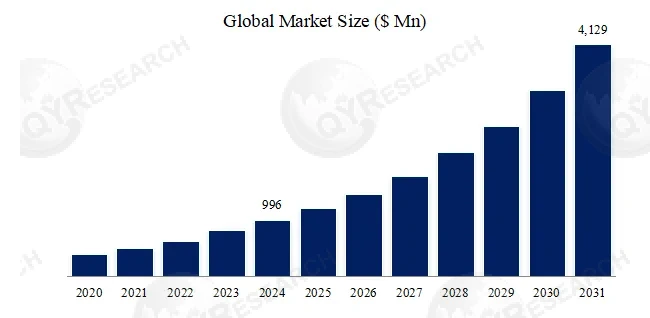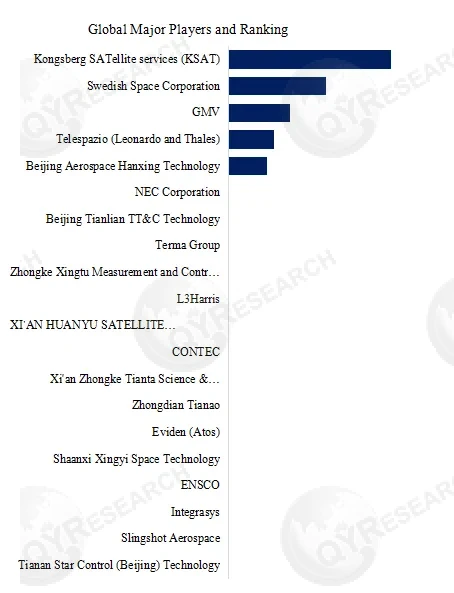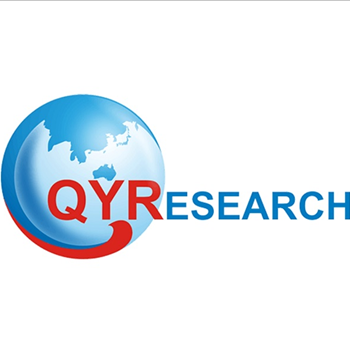Right Now
Aerospace Satellite Monitor and Control Systems Research Report: the market size is projected to reach USD 4.13 billion by 2031
Aerospace Satellite Monitor and Control Systems refers to the activities of tracking, measuring and controlling the flight and working status of spacecraft, and is the backbone link between spacecraft and ground communication. Aerospace Satellite Monitor and Control Systems refers to the provision of telemetry and remote control support, mission planning and scheduling, orbit determination and control, collision warning, health management and other technical services for the active stage of the rocket, the early orbit stage of the satellite, the on-orbit test stage, the long tube stage, and the deorbit stage, as well as the construction of aerospace infrastructure systems such as ground station networks.
Aerospace Satellite Monitor and Control Systems Industry View
With the vigorous development of aerospace technology, using space stations and perspectives to profoundly benefit and change the production and life of the earth has become an important part of modern human scientific and technological activities, and space assets have gradually become a new type of strategic assets that countries around the world are competing for. Since the launch of the first artificial satellite in 1957, the increasingly frequent space activities of mankind, the continuous reduction of spacecraft launch costs, and the gradual improvement of manufacturing and operation levels have brought about an exponential growth in the number of spacecraft in orbit in the past decade. The increasingly severe space traffic environment has brought opportunities and challenges to the management of spacecraft in orbit. From the perspective of in-orbit spacecraft, the number of high-orbit communication satellites in the United States and Europe leads the world, the number of low-orbit communication satellites in the United States leads the world, and the number of large and medium-sized remote sensing satellites and navigation satellites in China ranks first in the world. Each country has its own focus on space applications. As the fourth space for human development, international competition in space development has intensified and has become the focus of the game between major powers.
As an important part of aerospace engineering, Aerospace Satellite Monitor and Control Systems mainly provides support for the construction and operation of satellite constellations by providing technical services such as measurement and control support for the rocket active stage, satellite early orbit stage, in-orbit test stage, long tube stage, and deorbit stage, orbit determination and control, collision warning, as well as the construction and operation of aerospace infrastructure systems such as measurement and control centers and station networks. At present, the main players in the Aerospace Satellite Monitor and Control Systems industry include Kongsberg SATellite services (KSAT), Swedish Space Corporation, GMV, Telespazio (Leonardo and Thales), Beijing Aerospace Hanxing Technology, NEC Corporation, Beijing Tianlian TT&C Technology, Terma Group, Zhongke Xingtu Measurement and Control Technology, L3Harris, XI’AN HUANYU SATELLITE CONTROL AND DATA APPLICATION, CONTEC, etc. According to our research data, the global TOP5 market share of Aerospace Satellite Monitor and Control Systems industry in 2024 is about 48%. From a regional perspective, the market share of Europe and the United States exceeds 65%. Due to the rapid development of satellite construction technology, China has led the world in the compound annual growth rate in the past five years, and the overall market share has increased rapidly.
With the increasing number of spacecraft in orbit, the scale is getting larger and larger, and the types and application modes are becoming more and more complex, the control requirements and difficulties have increased significantly. Compared with the surge in the number of spacecraft in orbit, the ground measurement, operation and control system will face the problems of insufficient quantity and equipment shortage. Small satellites require large antennas, but the life of small satellites is usually short, and the investment in ground measurement and control equipment is relatively large, so ground measurement and control resources must be able to be networked and reused. In addition to the measurement and control tasks of traditional single satellites, the simultaneous measurement and control support for multiple satellites, the in-orbit operation management of multiple satellites and constellations, etc., put forward extremely high requirements on how the ground measurement and control network can provide timely, effective and flexible measurement and control services, which greatly increases the burden and operational complexity of the aerospace measurement and control system.
At present, commercial aerospace is developing rapidly, and the number and scale of launch plans for various types of spacecraft are increasing. In the past, a measurement and control center could manage multiple different types of spacecraft, but now, the operation of a single constellation requires a dedicated measurement and control center. With the increase in commercial operation needs, more and more Aerospace Satellite Monitor and Control Systems have been established, which marks the transition from centralized management mode to decentralized management of multiple measurement and control centers.
As the "lifeline of spacecraft", Aerospace Satellite Monitor and Control Systems are becoming increasingly important in the context of fierce competition in space. Aerospace Satellite Monitor and Control Systems is a key link in the communication between the earth and the spacecraft after the spacecraft is launched. It plays the role of a "highway" for information transmission between the earth and the spacecraft, and is a highly specialized sub-sector of the aerospace industry. The main functions of Aerospace Satellite Monitor and Control Systems are to track and measure spacecraft, receive on-board telemetry data, and send remote control commands to control the attitude and orbit of spacecraft. In the context of the increasingly fierce competition among countries for space assets, Aerospace Satellite Monitor and Control Systems have become the key to spacecraft's response to complex space environments and harsh space security situations, and are the decisive factor in the performance and life of spacecraft.
Aerospace Satellite Monitor and Control Systems Market Summary
According to the new market research report “Aerospace Satellite Monitor and Control Systems - Global Market Share and Ranking, Overall Sales and Demand Forecast 2025-2031”, published by QYResearch, the global Aerospace Satellite Monitor and Control Systems market size is projected to reach USD 4.13 billion by 2031, at a CAGR of 23.2% during the forecast period.
Figure00001. Global Aerospace Satellite Monitor and Control Systems Market Size (US$ Million), 2020-2031

Source: QYResearch, "Aerospace Satellite Monitor and Control Systems - Global Market Share and Ranking, Overall Sales and Demand Forecast 2025-2031”
Figure00002. Global Aerospace Satellite Monitor and Control Systems Top 20 Players Ranking and Market Share (Ranking is based on the revenue of 2024, continually updated)

Source: QYResearch, "Aerospace Satellite Monitor and Control Systems - Global Market Share and Ranking, Overall Sales and Demand Forecast 2025-2031”
According to QYResearch Top Players Research Center, the global key manufacturers of Aerospace Satellite Monitor and Control Systems include Kongsberg SATellite services (KSAT), Swedish Space Corporation, GMV, Telespazio (Leonardo and Thales), Beijing Aerospace Hanxing Technology, NEC Corporation, Beijing Tianlian TT&C Technology, Terma Group, Zhongke Xingtu Measurement and Control Technology, L3Harris, etc. In 2024, the global top five players had a share approximately 48.0% in terms of revenue.
In terms of product type, currently Service is the largest segment, hold a share of 71.3%.
In terms of product application, currently Others (Such as National Defense and Military) is the largest segment, hold a share of 46.4%.
About The Authors
| Xinxin Wang - Lead Author |
Email: wangxinxin@qyresearch.com | |
As a core market analyst at QYResearch, I focus on the structured research of global high value-added industries and establish a systematic research framework in the fields of electronic communication industry chain deconstruction and advanced manufacturing technology commercialization path. I have been deeply engaged in industry research for more than 5 years, and have delivered more than 220 professional analysis reports, serving the decision-makers of the world's top 500 technology companies, top investment institutions and industrial policy makers. During my career, I assisted the company in establishing a three-dimensional analysis model to accurately capture window opportunities in subdivided fields such as semiconductor equipment, 5G private network communications, and industrial robots. I created the original "industry demand pyramid" quantitative tool and achieved more than 85% demand forecast accuracy in growth markets such as automotive electronics and AR/VR hardware. |
About QYResearch
QYResearch founded in California, USA in 2007.It is a leading global market research and consulting company. With over 17 years’ experience and professional research team in various cities over the world QY Research focuses on management consulting, database and seminar services, IPO consulting (data is widely cited in prospectuses, annual reports and presentations), industry chain research and customized research to help our clients in providing non-linear revenue model and make them successful. We are globally recognized for our expansive portfolio of services, good corporate citizenship, and our strong commitment to sustainability. Up to now, we have cooperated with more than 60,000 clients across five continents. Let’s work closely with you and build a bold and better future.
QYResearch is a world-renowned large-scale consulting company. The industry covers various high-tech industry chain market segments, spanning the semiconductor industry chain (semiconductor equipment and parts, semiconductor materials, ICs, Foundry, packaging and testing, discrete devices, sensors, optoelectronic devices), photovoltaic industry chain (equipment, cells, modules, auxiliary material brackets, inverters, power station terminals), new energy automobile industry chain (batteries and materials, auto parts, batteries, motors, electronic control, automotive semiconductors, etc.), communication industry chain (communication system equipment, terminal equipment, electronic components, RF front-end, optical modules, 4G/5G/6G, broadband, IoT, digital economy, AI), advanced materials industry Chain (metal materials, polymer materials, ceramic materials, nano materials, etc.), machinery manufacturing industry chain (CNC machine tools, construction machinery, electrical machinery, 3C automation, industrial robots, lasers, industrial control, drones), food, beverages and pharmaceuticals, medical equipment, agriculture, etc.
Contact Us:
If you have any queries regarding this report or if you would like further information, please contact us:
QY Research Inc.
Add: 17890 Castleton Street Suite 369 City of Industry CA 91748 United States
E-mail: global@qyresearch.com
Tel: 001-626-842-1666(US) 0086-133 1872 9947(CN)
More Posts



















Report This Post
Please complete the following requested information to flag this post and report abuse, or offensive content. Your report will be reviewed within 24 hours. We will take appropriate action as described in Findit terms of use.



